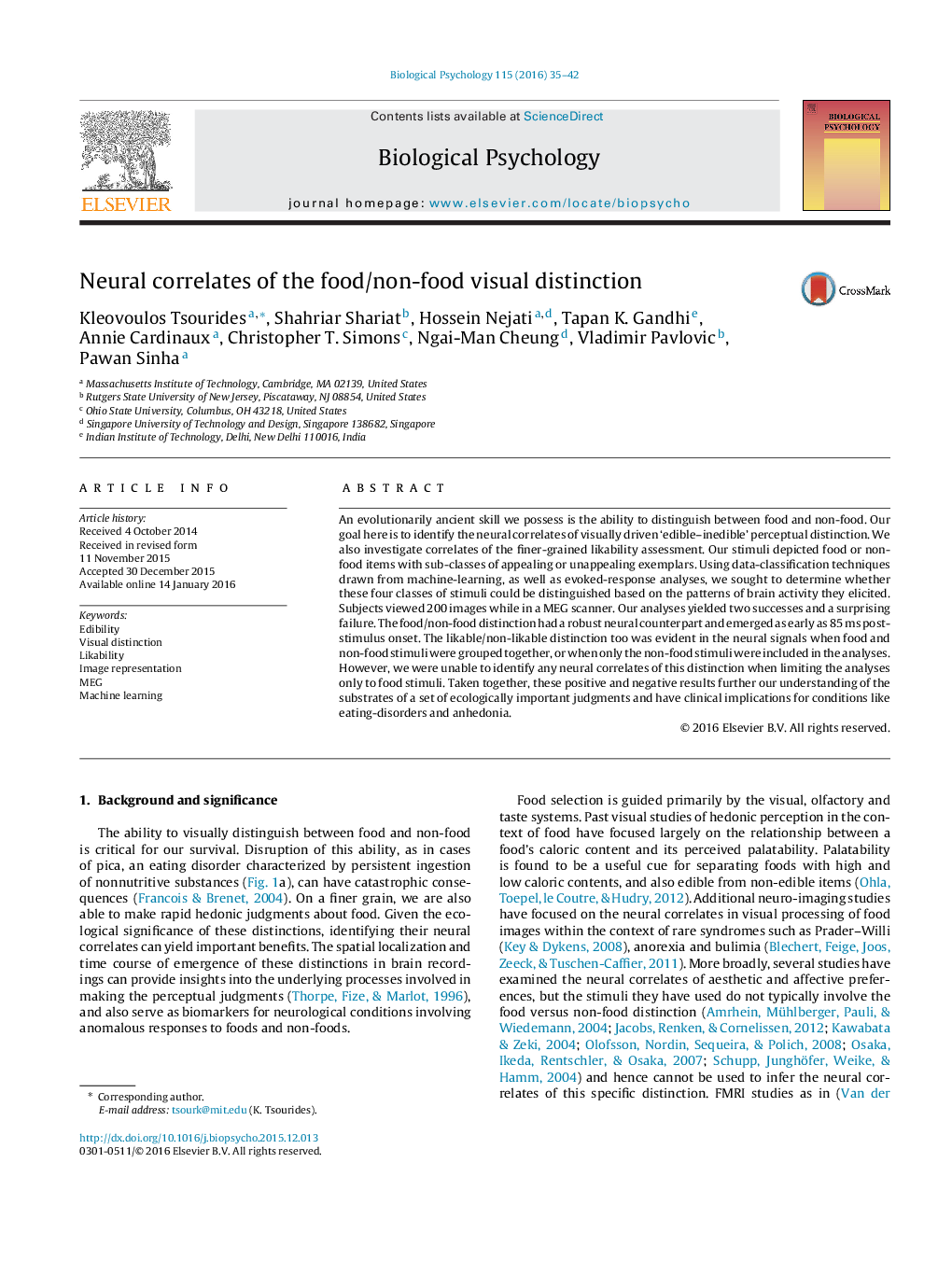| Article ID | Journal | Published Year | Pages | File Type |
|---|---|---|---|---|
| 920724 | Biological Psychology | 2016 | 8 Pages |
•Identified a neural correlate of the visual food/non-food distinction.•Short latency (85 ms) of the correlate indicates rapid processing of the food/non-food distinction.•Also identified a neural correlate of like vs dislike.•Low-level image content cannot explain the perceptual distinctions observed
An evolutionarily ancient skill we possess is the ability to distinguish between food and non-food. Our goal here is to identify the neural correlates of visually driven ‘edible–inedible’ perceptual distinction. We also investigate correlates of the finer-grained likability assessment. Our stimuli depicted food or non-food items with sub-classes of appealing or unappealing exemplars. Using data-classification techniques drawn from machine-learning, as well as evoked-response analyses, we sought to determine whether these four classes of stimuli could be distinguished based on the patterns of brain activity they elicited. Subjects viewed 200 images while in a MEG scanner. Our analyses yielded two successes and a surprising failure. The food/non-food distinction had a robust neural counterpart and emerged as early as 85 ms post-stimulus onset. The likable/non-likable distinction too was evident in the neural signals when food and non-food stimuli were grouped together, or when only the non-food stimuli were included in the analyses. However, we were unable to identify any neural correlates of this distinction when limiting the analyses only to food stimuli. Taken together, these positive and negative results further our understanding of the substrates of a set of ecologically important judgments and have clinical implications for conditions like eating-disorders and anhedonia.
